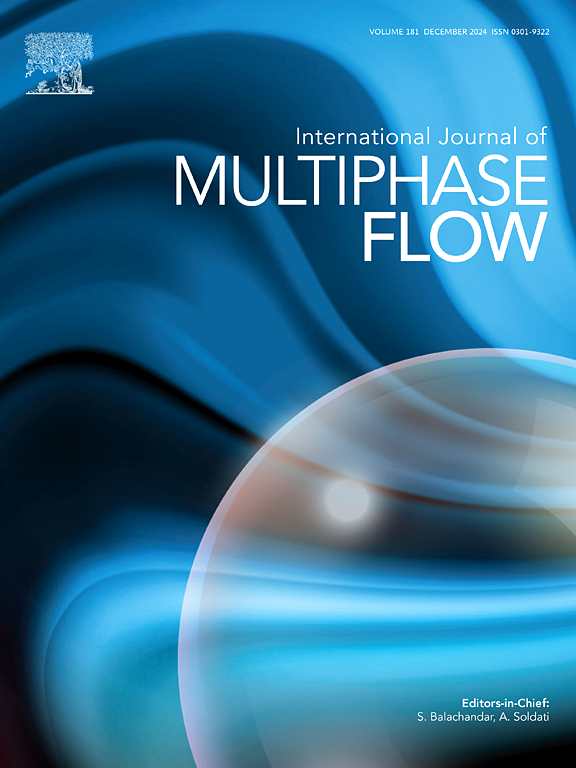Beyond direction-agnostic assumptions: Direction-integrated models for asymmetric falling film thickness and heat transfer under multidirectional vapor shear
IF 3.8
2区 工程技术
Q1 MECHANICS
International Journal of Multiphase Flow
Pub Date : 2025-09-03
DOI:10.1016/j.ijmultiphaseflow.2025.105439
引用次数: 0
Abstract
The orientation of vapor streams in falling film evaporators (FFEs), determined by tube bundle configurations, plays a critical role in shaping liquid film hydrodynamics and heat transfer performance. Conventional models adopt direction-agnostic assumptions, averaging vapor shear effects and introducing significant errors in localized predictions. This study proposes a direction-integrated framework that explicitly incorporates vapor orientation as a governing parameter, capturing the asymmetric effects of multidirectional vapor shear on film thickness and heat transfer. The proposed correlations are validated against a broad range of benchmark data, achieving 80 % of film thickness predictions within ±25 % error, over 86 % of local heat transfer coefficients within ±20 %, and all average values within ±5 %. Comparative analysis shows strong agreement with experimental and numerical results under gravity-driven, laminar conditions. Vapor directionality is shown to significantly alter heat transfer along the tube periphery, especially between upper and lower regions. These findings enhance the predictive reliability of FFE modelling and provide valuable guidance for optimizing evaporator design and improving energy efficiency in industrial applications.

超越方向不可知的假设:多向蒸汽切变下不对称降膜厚度和传热的方向集成模型
降膜蒸发器(FFEs)中蒸汽流的方向由管束结构决定,对形成液膜流体力学和传热性能起着至关重要的作用。传统模式采用方向不可知的假设,平均蒸汽剪切效应,并在局部预测中引入重大误差。本研究提出了一个方向集成框架,明确地将蒸汽方向作为一个控制参数,捕捉多向蒸汽剪切对膜厚度和传热的不对称影响。根据广泛的基准数据验证了所提出的相关性,80%的薄膜厚度预测误差在±25%以内,超过86%的局部传热系数误差在±20%以内,所有平均值在±5%以内。对比分析表明,在重力驱动的层流条件下,实验结果与数值结果非常吻合。蒸汽的方向性显著地改变了沿管道外围的传热,特别是上下区域之间的传热。这些发现增强了FFE模型的预测可靠性,并为优化蒸发器设计和提高工业应用中的能源效率提供了有价值的指导。
本文章由计算机程序翻译,如有差异,请以英文原文为准。
求助全文
约1分钟内获得全文
求助全文
来源期刊
CiteScore
7.30
自引率
10.50%
发文量
244
审稿时长
4 months
期刊介绍:
The International Journal of Multiphase Flow publishes analytical, numerical and experimental articles of lasting interest. The scope of the journal includes all aspects of mass, momentum and energy exchange phenomena among different phases such as occur in disperse flows, gas–liquid and liquid–liquid flows, flows in porous media, boiling, granular flows and others.
The journal publishes full papers, brief communications and conference announcements.

 求助内容:
求助内容: 应助结果提醒方式:
应助结果提醒方式:


